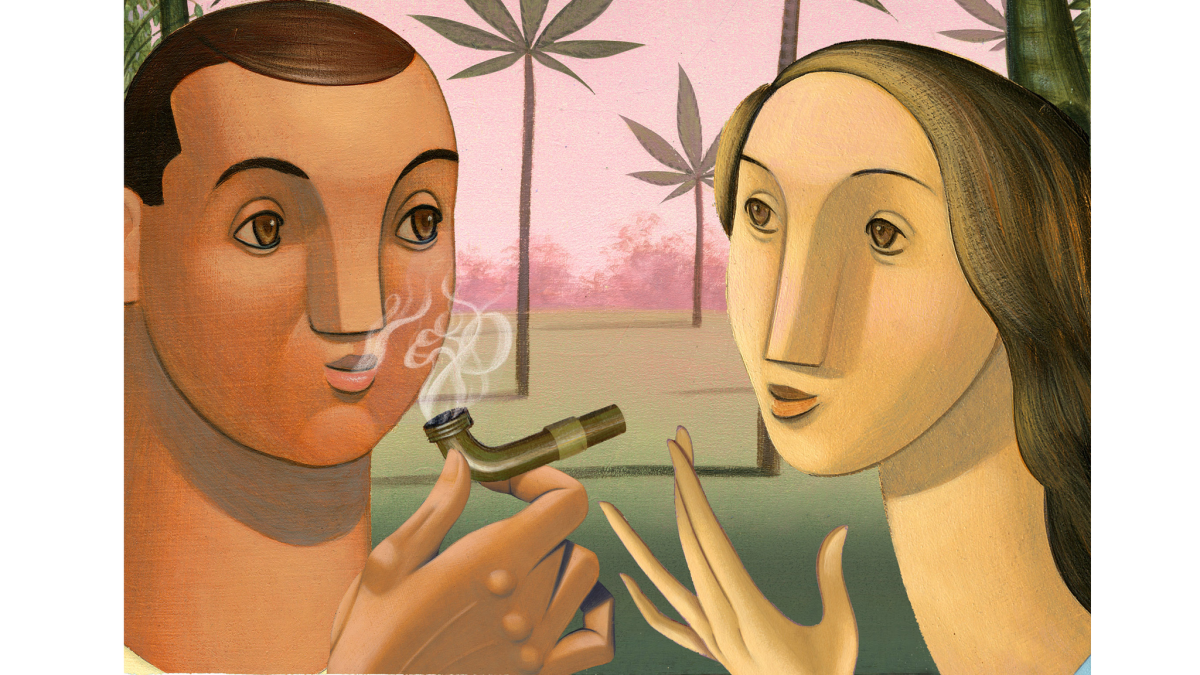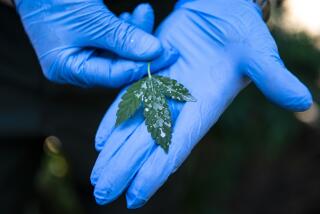Opinion: Beware boomers: What not to do when feeling nostalgic for the ‘60s

When New York Times columnist Maureen Dowd wrote last week about her “bad trip” -- eight straight hours of paranoia and paralysis -- from sampling a cannabis-laced candy bar in her Denver hotel room in January while reporting on Colorado’s legalized marijuana scene, there was a rush to blame someone.
The culprits were, typically, either Dowd herself for not paying attention to warnings from her marijuana tour guide about the powerful nature of “edibles,” or the marijuana industry for failing to establish standardized dosage or potency guidelines on a drug that’s far stronger than it’s ever been. (You can read Ricardo Baca of the Denver Post’s TheCannabist blog for the former and David DiSalvo of Forbes for the latter.)
I think the real reason why she inadvertently overdosed is somewhat different: Maureen Dowd is 62 years old. This is not a reflection one way or the other about whether she’s too old to be a stoner; I’ll leave that for you readers to decide. It is, however, a reflection on how dramatically not just the composition of marijuana but marijuana culture has changed over the last 40 years.
It’s my theory that Dowd got way too high in the Mile High City not because she didn’t pay enough attention but because she thought the experience would be just the way it was when she was 40 years younger.
Let’s do some math. Dowd turned 18 on Jan. 14, 1970. That was just a few months after Woodstock. That puts her into roughly the same age group as me, and believe me, pot was everywhere among young people of college age and beyond in the early 1970s, when ’60s hippie culture went mainstream.
I’ll never admit to having smoked the stuff myself -- that’s against the law where I live! -- but I remember exactly what it looked like. There was this item called a “nickel bag,” a plastic baggie that sold for $5 (pre-inflation days) and was loosely filled with a dusty, low-grade assortment of leaves, twigs and seeds that no respectable marijuana smoker would be caught dead buying today. None of this stuff could get you very high unless you smoked a fairly large quantity of it.
Today’s marijuana is nearly all high-quality flower buds, the most powerful (that is, THC-laced) part of the marijuana plant. As a retail product, it would be almost unrecognizable to a time-traveler from the flowers-in-your-hair era.
As “Ask an Old Hippie,” a columnist for the 420 Times, explains:
“Despite the anxious hand-wringing among many drug warrior types about how ‘today’s marijuana is so much stronger OMG isn’t it terrible’, [sic] what we did back then was actually smoke a lot more of it to get the desired effect. This was more dangerous for our health, since smoking is the least healthy (as well as most wasteful) way of ingesting cannabis. But we didn’t know any different back then. Today, we have vaporizers, capsules, and edibles of every type, so there’s no reason for patients to actually smoke except for nostalgia.”
Well, there actually were edibles back then: the “marijuana brownie,” made famous by Gertrude Stein’s lover, Alice B. Toklas, in her “Alice B. Toklas Cook Book,’ published to relative obscurity in 1954 and turned into a bestseller when hippies discovered it later. (You can read Toklas’ recipe here.)
In 1968, when Maureen Dowd was 16, Warner Brothers released “I Love You, Alice B. Toklas,” a comedy about an uptight lawyer, Harold (Peter Sellers), who falls in love with a beautiful hippie chick, Nancy (Leigh Taylor-Young). One of the most famous scenes in “I Love You” features Nancy deciding to whip up a batch of Toklas-style brownies as dessert for Harold and his uptight family and friends. You can watch that scene here on YouTube. Notice how Nancy cheerfully dumps an entire jar of marijuana into her stand-mixer. Also notice how quickly Harold’s guests become merrily and convivially high after just a few bites. No problem with edibles for them!
I’m convinced that Dowd thought she’d be reliving the ’60s when she decided to sample that candy bar in her hotel room. She was even wearing, she wrote, “green corduroy jeans” -- and we know that cord bell-bottoms were a staple of hippie-wear back then. Here is how she described her experience:
“Sitting in my hotel room in Denver, I nibbled off the end and then, when nothing happened, nibbled some more.
“... For an hour, I felt nothing.
“...But then I felt a scary shudder go through my body and brain. I barely made it from the desk to the bed, where I lay curled up in a hallucinatory state for the next eight hours. I was thirsty but couldn’t move to get water. Or even turn off the lights. I was panting and paranoid, sure that when the room-service waiter knocked and I didn’t answer, he’d call the police and have me arrested for being unable to handle my candy.”
Dowd clearly expected to be consuming the low-grade weed of ’60s hippie culture, in which it took massive quantities to produce a genuinely bad trip. But the ’60s are long gone -- and as Dowd learned the hard way, it’s perilous to try to recapture the ’60s when you’re in your 60s.
Charlotte Allen writes frequently about feminism, politics and religion. Follow her on Twitter @MeanCharlotte.
More to Read
Sign up for Essential California
The most important California stories and recommendations in your inbox every morning.
You may occasionally receive promotional content from the Los Angeles Times.










